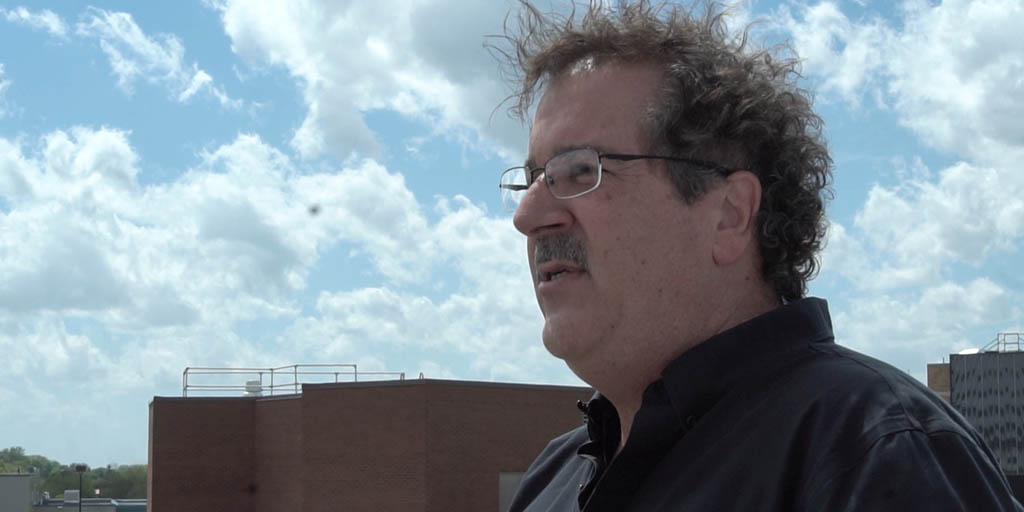Professor makes campus more energy efficient
 CREDIT: KHAI TRAN
CREDIT: KHAI TRANTom Davis spreads his message about sustainability from atop Fanshawe's H-building.
Tom Davis, professor at the Donald J. Smith School of Building Technology at Fanshawe College, has overseen the installation of 600 photovoltaic panels on the roof of Fanshawe’s H-building.
The installment is part of a series of projects, led by Davis, his students and various members from partnering departments at Fanshawe College.
“The entire project of the installation of the solar panels took about three months from the inception to its completion,” Davis said. “The panels were pre-manufactured, in town, and delivered to the building and hoisted to the roof, which allowed us to assemble it. It pretty much goes together like Legos, so it’s a very quick assembly process.”
The effect of these panels runs deeper than the obvious money-saving benefits. These panels, and the way they were installed, will help the Fanshawe building save energy before the panels even start generating power.
“By putting the panels on the roof of a building, what we’re doing is creating a shaded space beneath those panels. The actual physical act of shading the building reduces the power demand from the building by up to 60 per cent,” said Davis.
Lowering the building’s heating and cooling demands will also require less output from the solar panels, and excess energy can be stored and used elsewhere accordingly.
A similar approach will be used once Davis and his team of students tackle the issue of retrofitting Kestrel Court. Kestrel Court was developed as single family housing that was then converted to student residences with six-person occupancy. In other words, these buildings were not designed to withstand their current energy output.
“When we test the units at Kestrel Court we find that they leak five times their volume every hour. So no longer are we heating a building, we’re heating five buildings because it’s leaky,” Davis said.
The job towards sustainability is not finished after all the leaks have been sealed. Efforts have been made to align with manufacturers of heating and ventilation equipment to produce units that work more efficiently within the retrofitted properties. Davis said these partnerships are key towards maximizing energy efficiency, but still more work is needed.
Next comes the issue of insulation. To illustrate his point, Davis gave an analogy that helps to simplify the notion.
“I’ll use an example. If you’re going outside of the classroom building in the winter time and you’re carrying a sweater, you have two options. You can eat the sweater or you can put it on and wear the sweater to stay warm. What would you choose to do?”
The concept is simple and reasonable, and yet, as Davis highlights, the construction and insulation of buildings don’t follow the same reasonable approach. However, Davis pointed out that for optimum effectiveness these reasonable changes can make a world of difference, not just for the planet but for our wallets too.
“In effect, that’s what these deep energy retrofits are. We’re building an exterior wall assembly that goes and attaches to the outside of the existing structure and it creates a new sweater or a new coat. So we plug the leaks and we put on a new sweater, and now the highest energy demand isn’t heating and cooling the building, it’s turning the lights on or running your child’s PS4,” said Davis.
Davis is busy working with the media, public and Catholic school boards, as well as public hospitals, in an effort to share his expertise with the community.
He said he believes that half the battle is putting the work in, while the other half is educating the masses about the importance of what he is doing, and how they can help. According to Davis, the more people are informed about ways in which they can assist the environmental cause, in whatever capacity they can, the better off we will all be in the long run.














